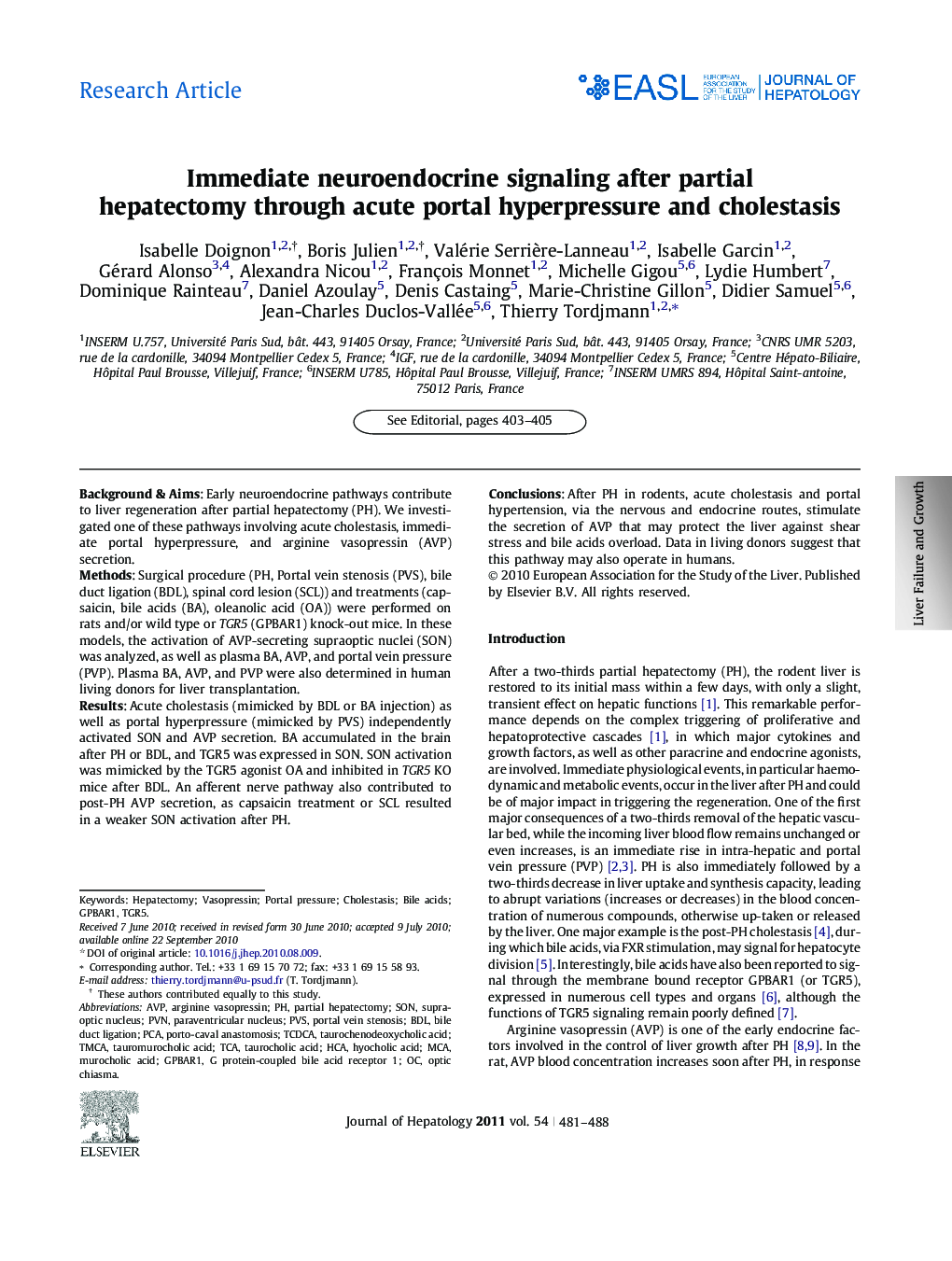| Article ID | Journal | Published Year | Pages | File Type |
|---|---|---|---|---|
| 6106886 | Journal of Hepatology | 2011 | 8 Pages |
Background & AimsEarly neuroendocrine pathways contribute to liver regeneration after partial hepatectomy (PH). We investigated one of these pathways involving acute cholestasis, immediate portal hyperpressure, and arginine vasopressin (AVP) secretion.MethodsSurgical procedure (PH, Portal vein stenosis (PVS), bile duct ligation (BDL), spinal cord lesion (SCL)) and treatments (capsaicin, bile acids (BA), oleanolic acid (OA)) were performed on rats and/or wild type or TGR5 (GPBAR1) knock-out mice. In these models, the activation of AVP-secreting supraoptic nuclei (SON) was analyzed, as well as plasma BA, AVP, and portal vein pressure (PVP). Plasma BA, AVP, and PVP were also determined in human living donors for liver transplantation.ResultsAcute cholestasis (mimicked by BDL or BA injection) as well as portal hyperpressure (mimicked by PVS) independently activated SON and AVP secretion. BA accumulated in the brain after PH or BDL, and TGR5 was expressed in SON. SON activation was mimicked by the TGR5 agonist OA and inhibited in TGR5 KO mice after BDL. An afferent nerve pathway also contributed to post-PH AVP secretion, as capsaicin treatment or SCL resulted in a weaker SON activation after PH.ConclusionsAfter PH in rodents, acute cholestasis and portal hypertension, via the nervous and endocrine routes, stimulate the secretion of AVP that may protect the liver against shear stress and bile acids overload. Data in living donors suggest that this pathway may also operate in humans.
